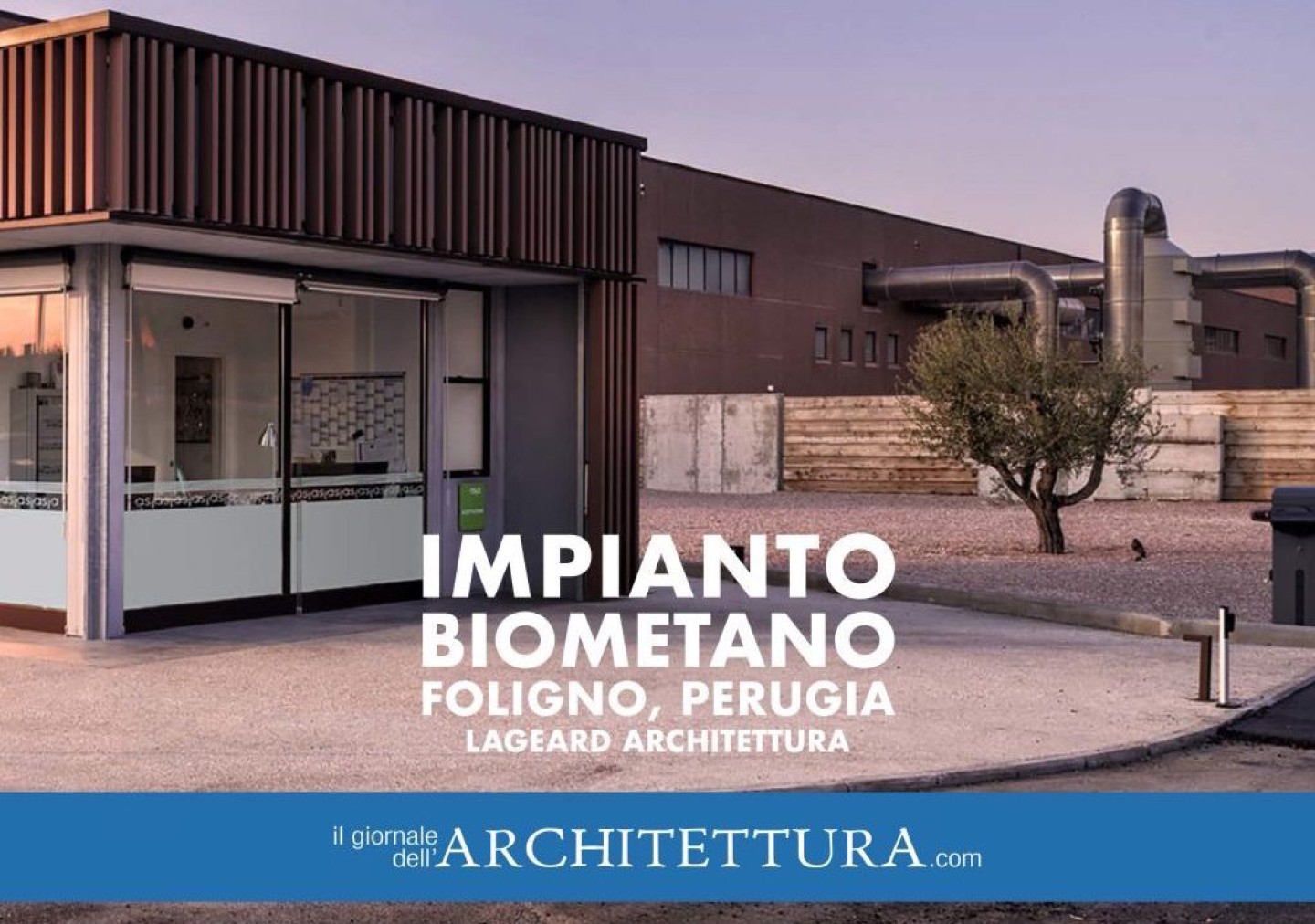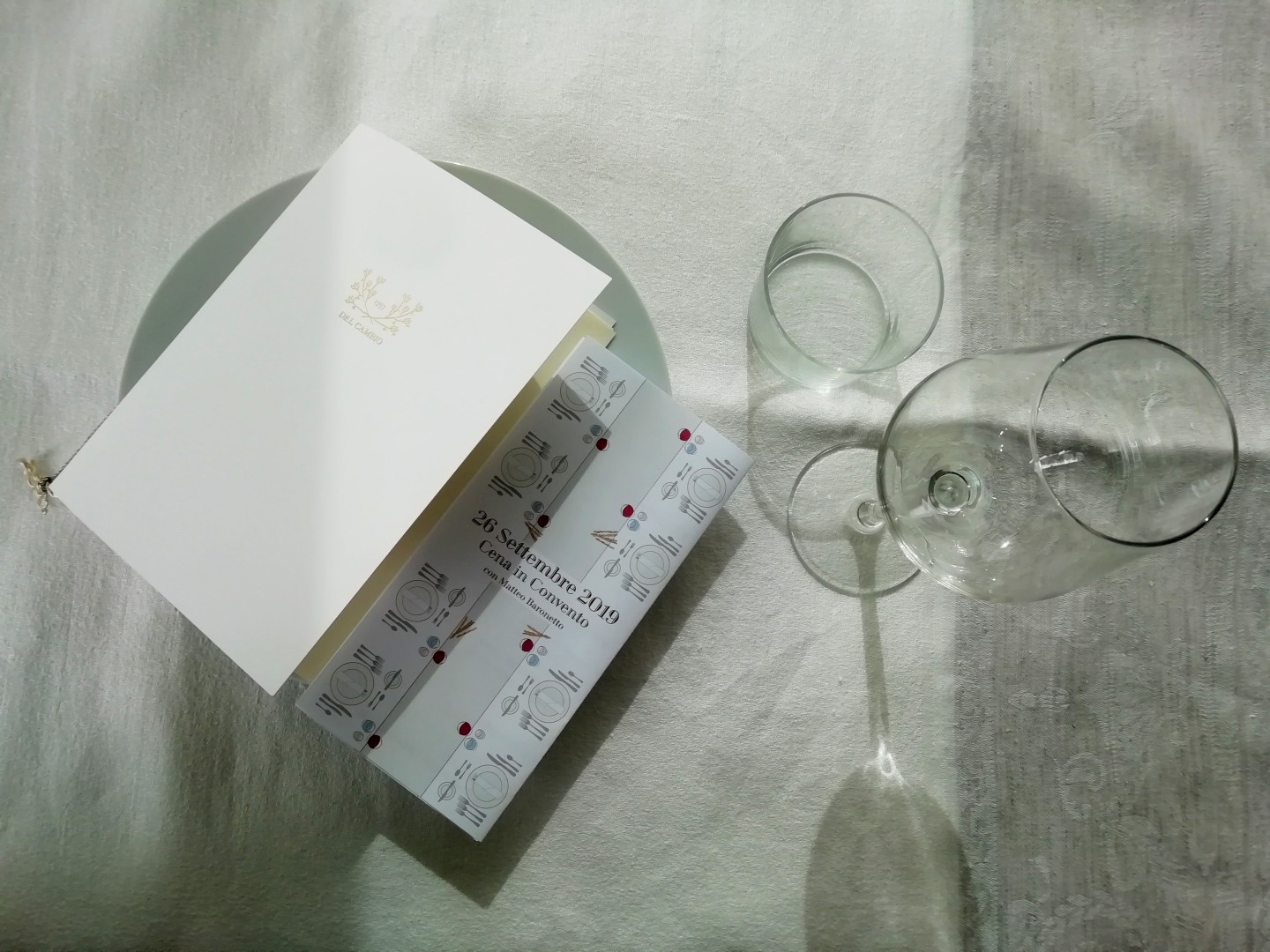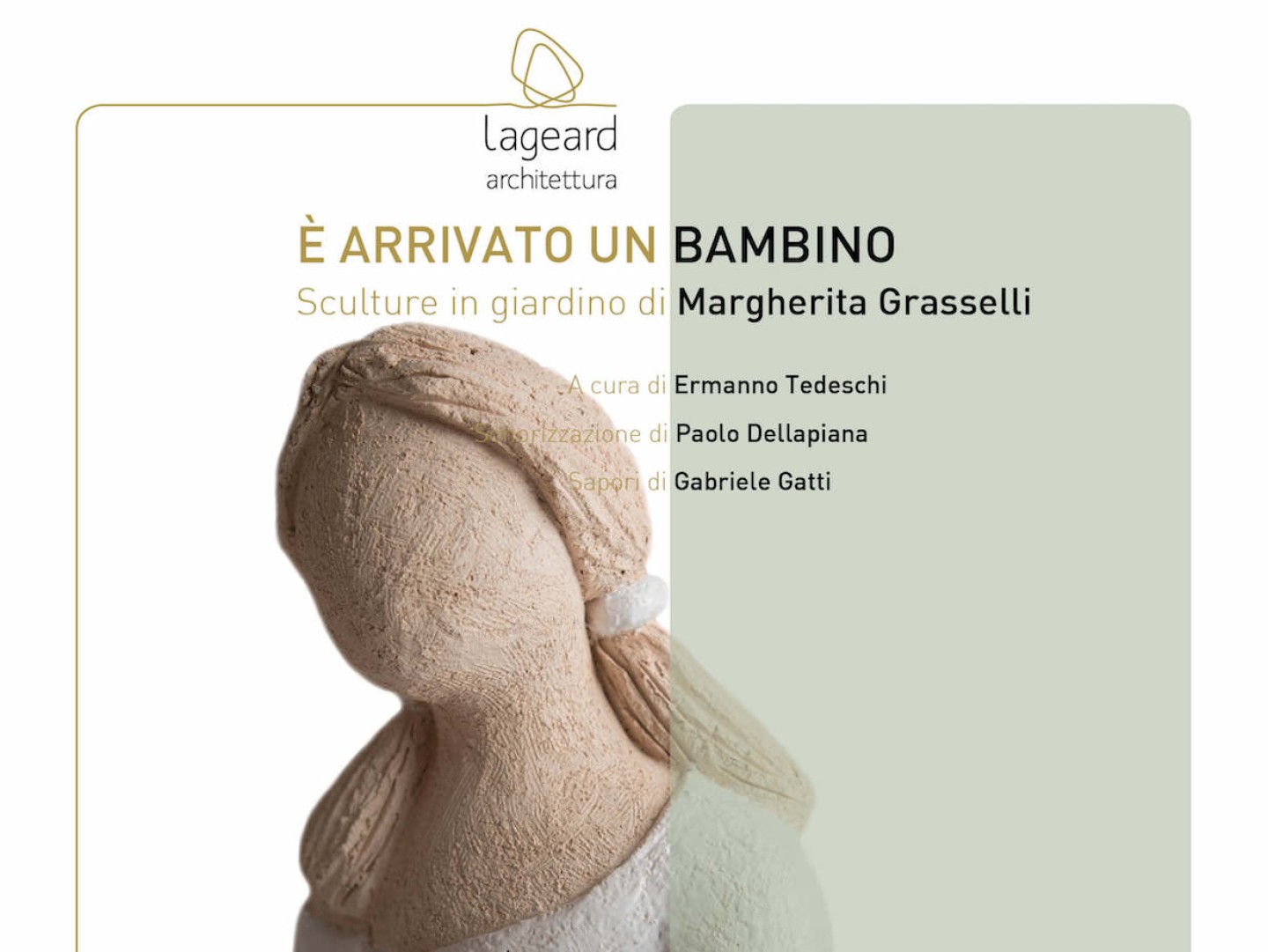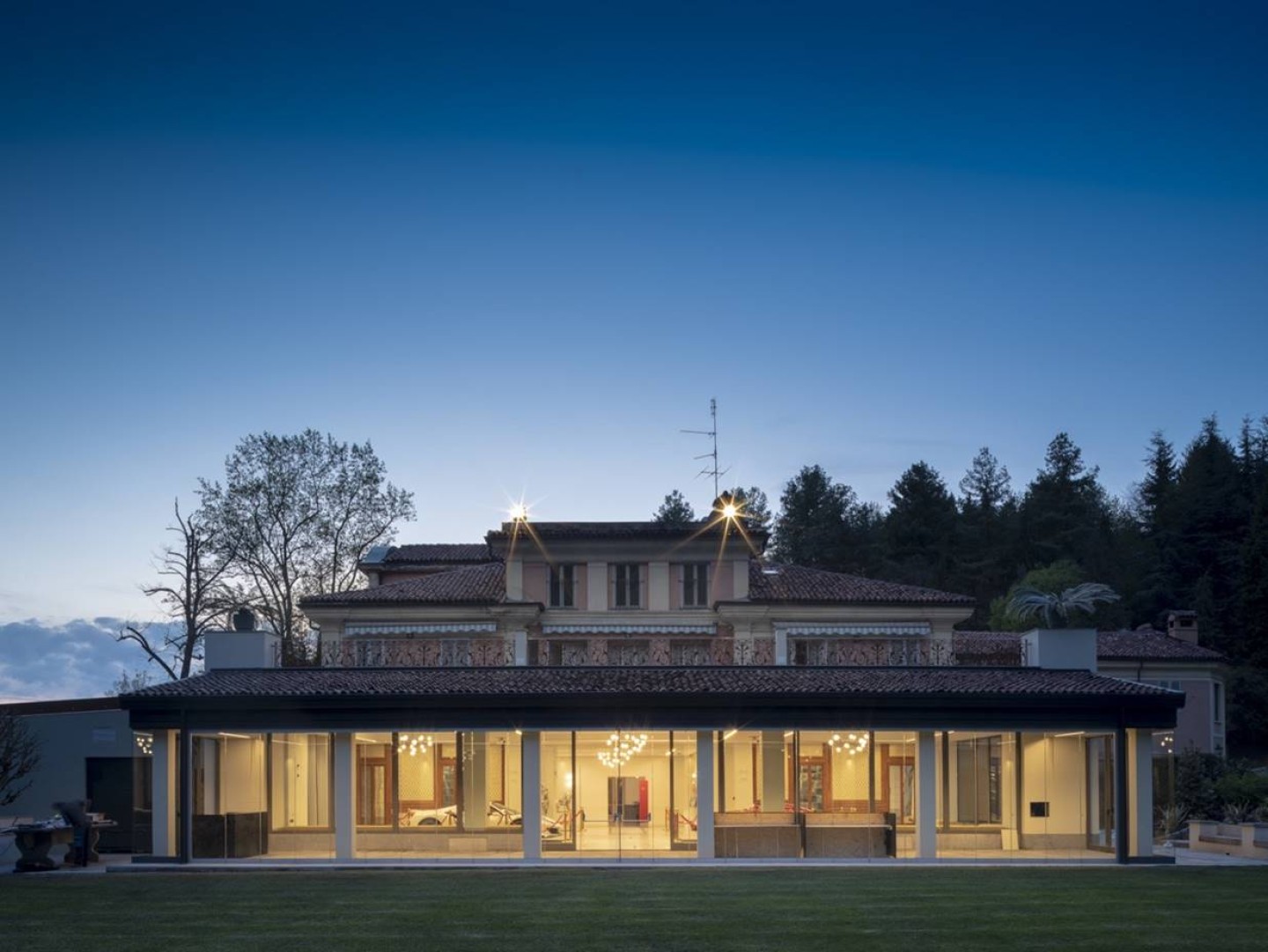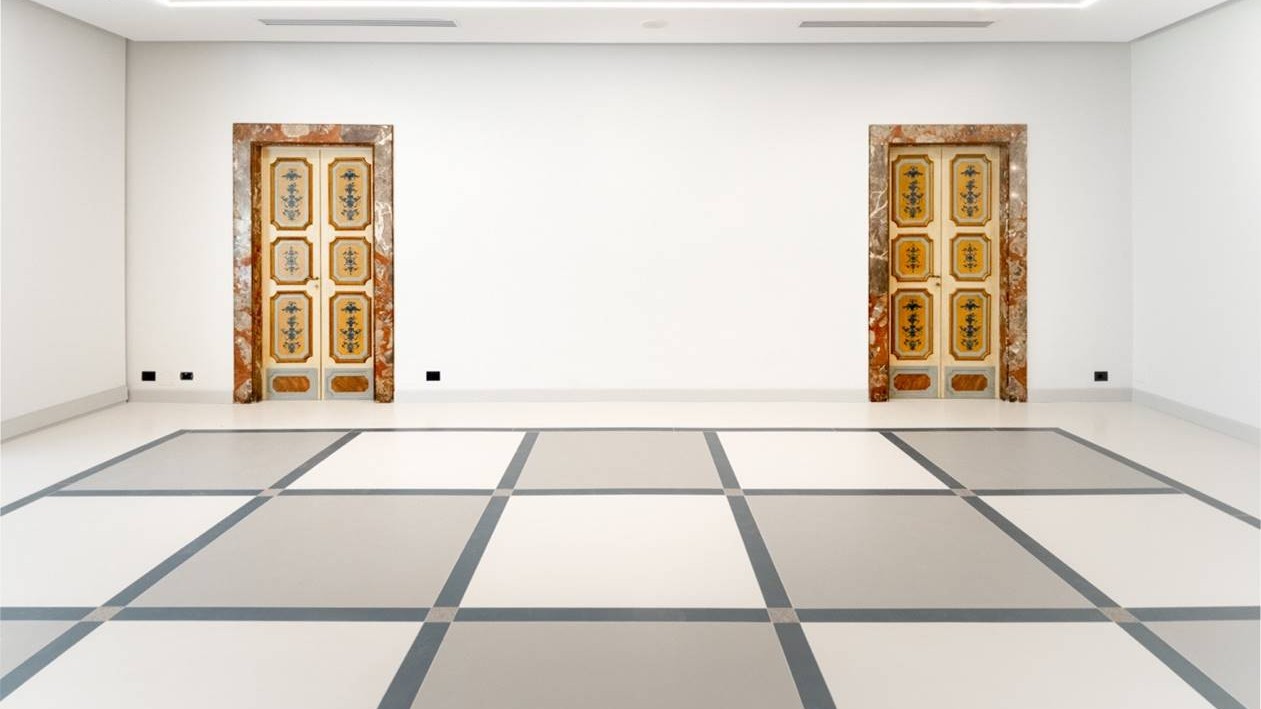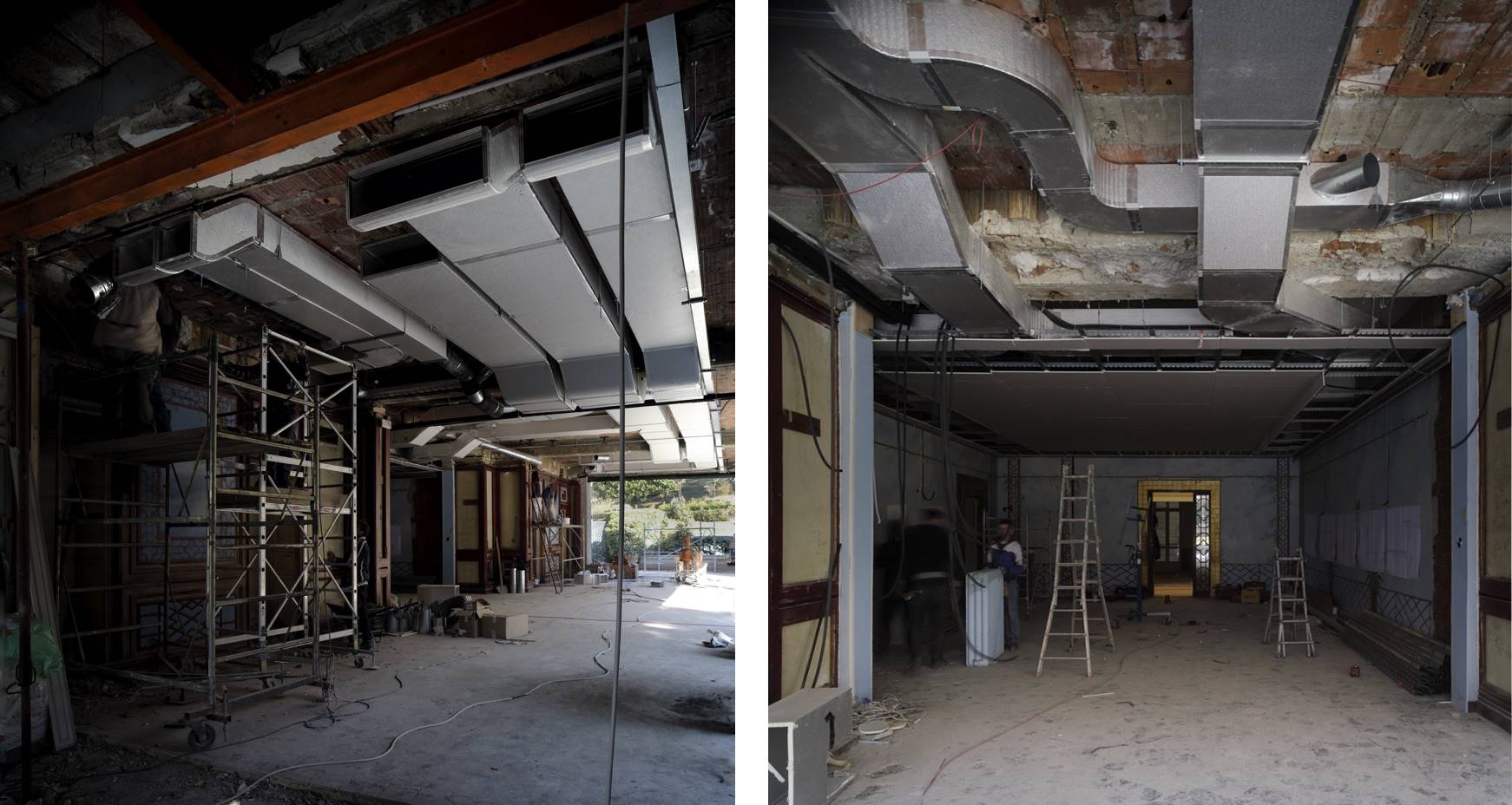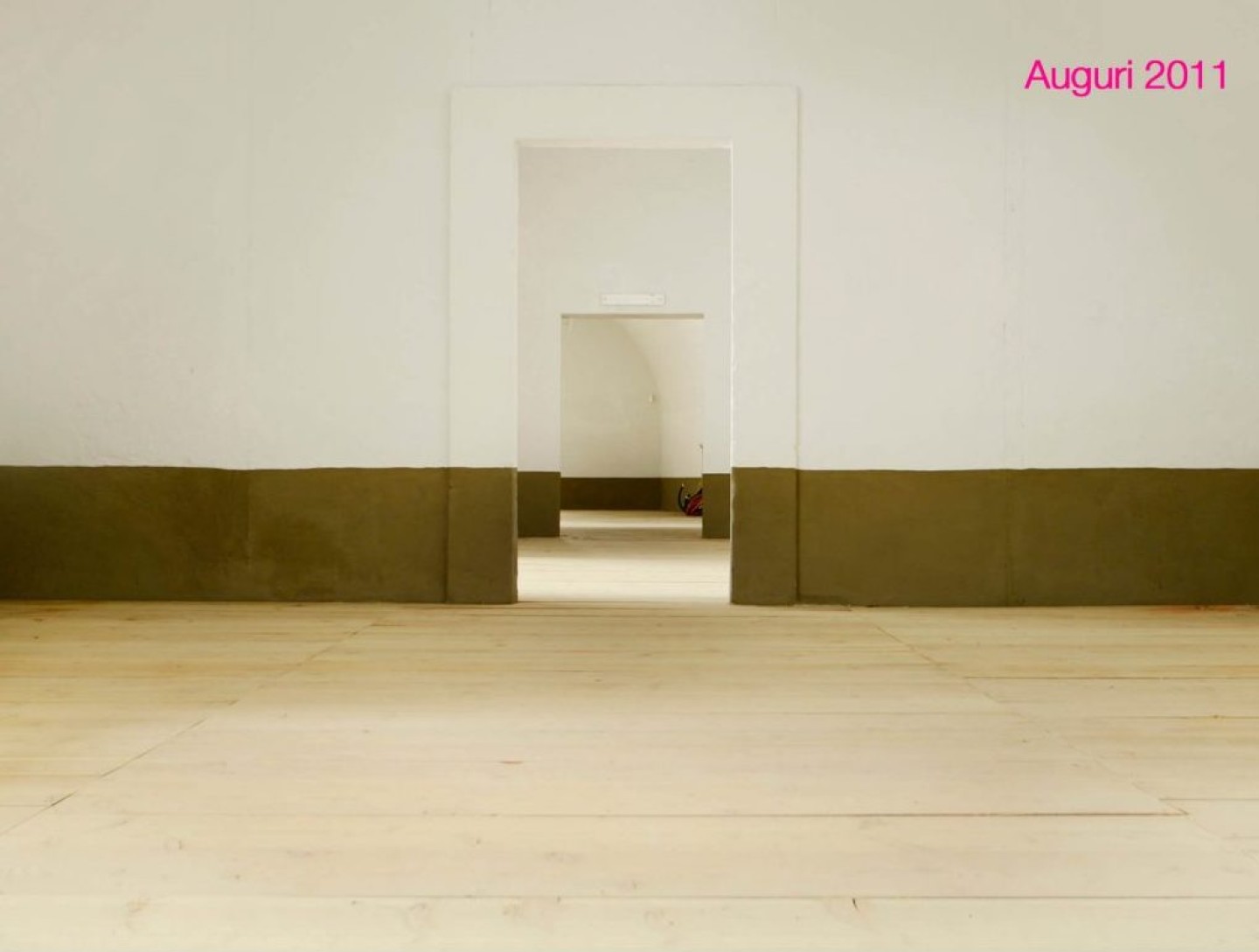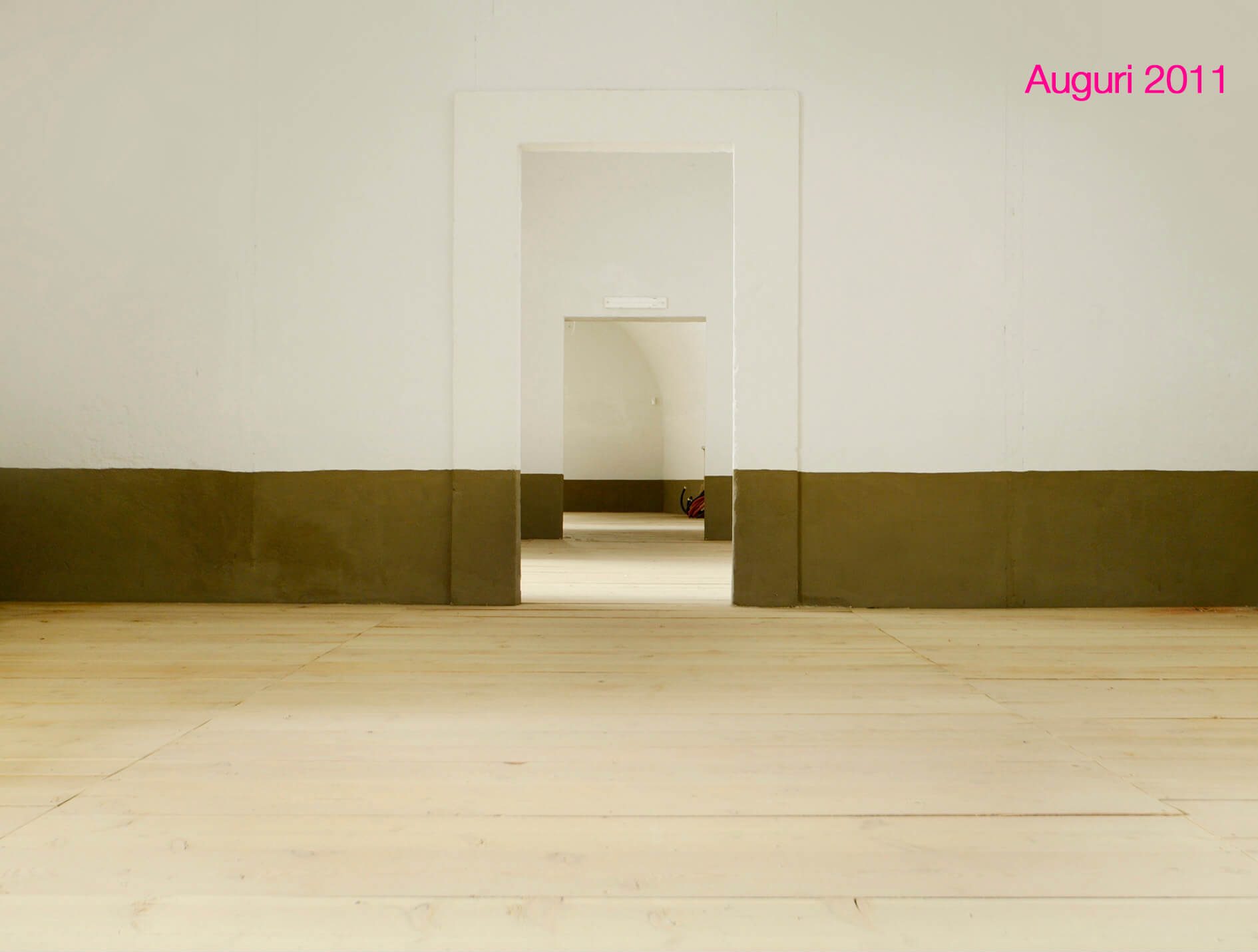



The mission behind Michela Lageard’s architecture for the biomethane plant in Foligno is a perfect blend of expression and appreciation. The project is guided by a search for compatibility between industry and the landscape. It also reflects a similar commitment to reconcile growth and environmental sustainability by encouraging the landscape to become a new productive model of circular economy. The new plant, inaugurated by Asja in 2018, was designed as a “manifesto” of the potential of the fourth industrial revolution where, from the perspective of a smart vision of environmental transformation processes, economy rhymes with ecology. No more radical, indiscriminate consumerism. On the contrary, an awareness of the relationship between the environment and development, to which Lageard and Asja have given shape and content by creating a new biomethane production plant using organic waste. This shows that economic development in the Third Millennium cannot ignore industry’s ecological advance and the new, low carbon content economy that uses renewable energy to transform waste into new resources.
The construction of the plant is the result of the commitment of institutions, operators and designers, who shared the long authorisation process, and proved that collaboration between the public and private sectors, together with the citizens’ active participation, can give concrete, effective and sustainable responses to the needs of the territory. In fact, the initial phases of the project established a dialogue to involve the local community. This culminated in a Council, in which citizens, associations and institutions took part to monitor and provide information. A shared approach to the project toreflect the desire for conciliation rather than opposition.
The new industrial installation is a strong feature, which cannot be camouflaged, and inevitably makes compatibility with the landscape quite difficult. As a result, Asja appointed the Lageard Architettura studio to identify architectural solutions, which would enable the buildings to blend more easily into the rural landscape. Lageard Architettura took another look at the concept and tackled the design of the building envelopes, reorganised the functions of the interior spaces and the layout of the external spaces.
The external finish of the industrial buildings, which envisaged smooth, full height, vertical panels on a grey, cement caisson base, was improved with mahogany coloured marble-grit panels, divided by false horizontal joints to break the modular rigidness and link with the rugged land within the landscape. Consistent with this solution, the cladding of the main façade of the office block, for which a new, more efficient, internal layout was designed, uses prefabricated panels with a bush-hammered finish and composite wood, brise soleil battens to create a dynamic dialogue between the materials and the surrounding context. The weighing station was reinterpreted as an entrance and reception point. It also abandons the standard solution and acquires its own identity, thanks to a cast-in-situ, concrete cladding, divided by composite wood profiles to match the architecture of the entire complex. In this way, the architecture was able not only to interpret an innovative message of environmental underpinning, but also to add value to the identity of the surrounding areas and their productions. It is expressed in a language, which pays close attention to the relationship between technology and the landscape to transform the building-machine into top quality, industrial architecture.
During construction, although the authorised construction and dimensional specifications remained unaltered, some architectural solutions were identified that would allow the buildings to fit in more harmoniously with the surrounding landscape. Therefore, the smooth, grey exterior finish with caisson foundation was replaced with a mahogany coloured, marble-grit finish and false horizontal joints were inserted to break the rigid, modular construction and give it a more natural, organic feel. The “rough surface” and colour combination contribute to creating a dialogue between the architecture and the landscape.
The authorised project also envisaged the same external cladding for the office block as for the other buildings, consisting of prefabricated panels in reinforced concrete with a smooth, grey, external finish with caisson foundation. The bush-hammered solution with the insertion of a Novowood type of composite wood, brise soleil profile used for the main façade, exploits the variations in colour and texture to evoke the surrounding, rural landscape.
The office block also underwent a functional reorganization of its spaces. The interior was reworked to give more functional solutions, so that the operational area is clearly separated from the reception area to keep the flow of operational staff apart from visitors. Separate access to the reception area from the operational area features two arcaded areas, constructed within the volume of the prefabricated structure.
CREDITS:
Radiografia del contemporaneo - Monograph edited by ilgiornaledell'architettura.com
Sesiers edited by Cristina Donati Texts: Cristina Donati Editorial coordiantion: Laura Milan Ph: Fabio Oggero
https://bit.ly/2K6HDXI https://bit.ly/3bdo23Z
